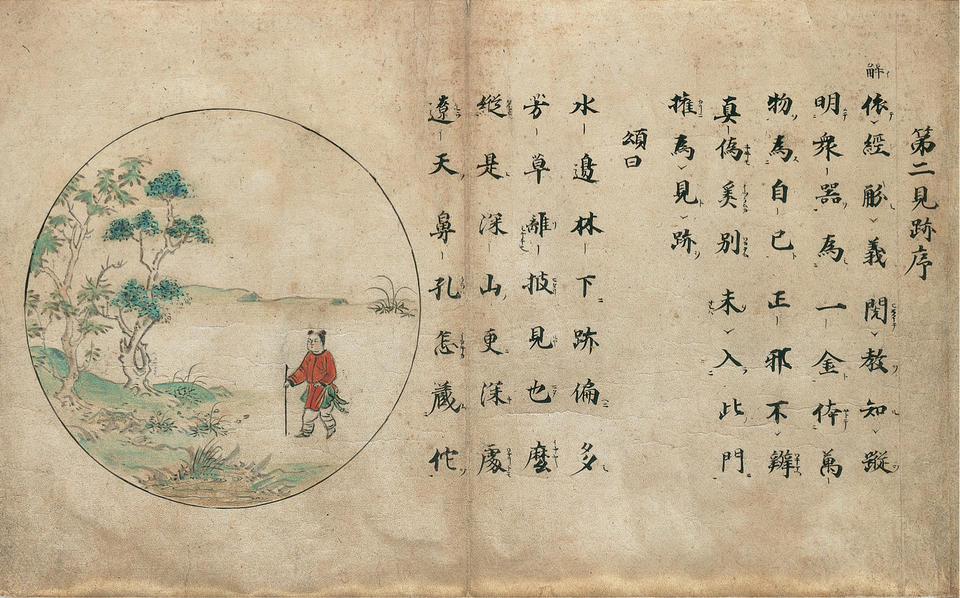Catalogue information
Kamakura period, 1278
Handscroll (details, above); ink and color on paper
31 x 624.6 cm (12 1/4 in. x 20 ft. 5 7/8 in.)
Ex Coll.: Sorimachi Jūrō, Tokyo
Literature
See also
This artwork was published as catalogue entry 31 in Volume I of Art through a Lifetime.
Additional details


Text
Song 2. Seeing the Footprints of the Ox
Commentary / Relying on sutras, one comprehends the meaning, / and studying the doctrines, one finds some traces. / As it becomes clear that differently shaped metal vessels / are all made from the same piece of metal, / one realizes that the myriad entities [one thinks one sees] / are formulated by oneself. / Unless one can separate the orthodox from the heretics, / how can one distinguish the true from the untrue? / Not having entered the gate as yet, / at least one has noticed the traces.
Poem / By the water, and under the trees, / there are numerous traces. / Fragrant grasses grow thickly, / did you see the ox? / Even in the depths of the distant mountain forest, / how could the upturned nostrils of the ox be concealed?
Song 4. Catching the Ox
Commentary / The ox lived in obscurity in the field for so long, / but I found him today. // While I am distracted by the beautiful scenery, / and the difficult chase, / the ox is longing for fragrant grass. // His mind is still stubborn. / And his wild nature yet remains. // If I wish him tamed, I must whip him.
Poem / With all my energy, I seize the ox. // His will is strong, and his power inexhaustible. / He cannot be tamed easily. // Sometimes he charges to the high plateau, // and there he stays, deep in the mist.
Signature
In the Year of the Fifth Tiger of the Kōan Era
[1278], on the sixteenth day of the eighth month, I am inscribing the postscript of the Ten Pictures of the Ox
; [illegible] gi
Seal
[at end of scroll] kaō


